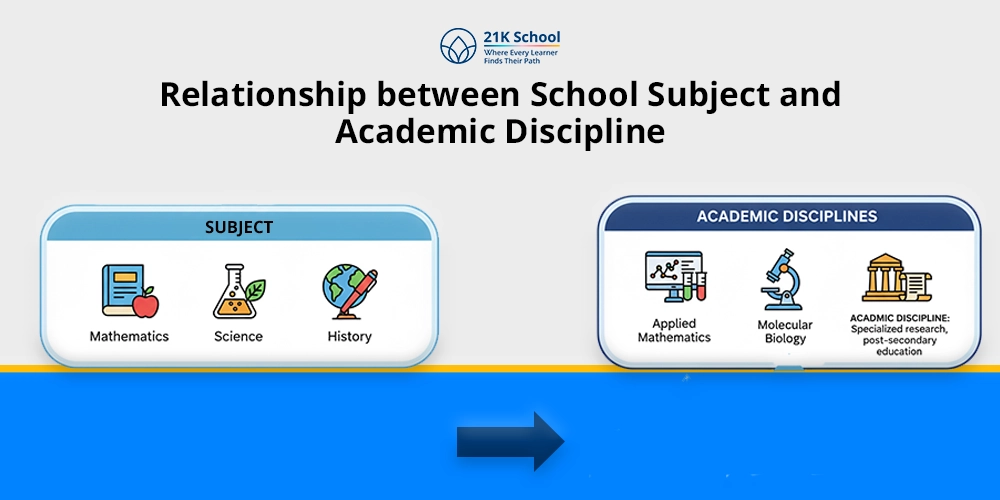
Do you think the marking and grading system are the same thing?
Marking and grading are considered the same thing; however, both are different concepts. The marking and grading system is mostly used in the examination factor, which showcases the performance of students.
Marking and grading are both used as assessments to evaluate students’ performance.
Marking systems are numbers which are used to assess students’ performance, whereas grading systems are alphabets which translate the scores into letter grades.
While marking concentrates on individual evaluations, grading focuses on students’ overall performance in a course. Marking and grading are both an essential element that aids in assessing student performance and comprehension.
Although they both have the same objective of assessing student work, their methods, applications and effects on learning are very different.
Table of Contents
What is the Marking System?
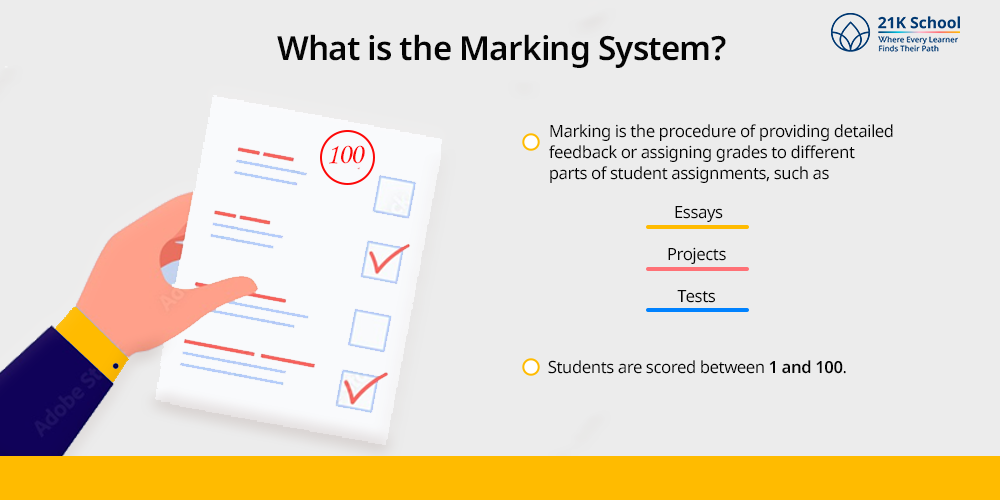
Marking is the procedure of providing detailed feedback or assigning grades to different parts of student assignments, such as essays, projects or tests.
By highlighting the work’s specifics, this method enables educators to identify both its advantages and areas for improvement.
Feedback is often more qualitative, focusing on the nuances of student performance rather than just the final outcome. Students typically receive written feedback on how to advance their skills and knowledge.
This also allows students to assess their weaknesses and areas of improvement.
The marking system mostly focuses on the number system or percentage, where students are scored between 1 and 100. It entails giving particular parts of a student’s work descriptive or numerical scores.
What is the Grading System?

Grading is the process of assigning a letter or a number to a student’s overall performance based on a predetermined set of criteria.
This approach is usually more quantitative, which aims to provide a summary of a student’s performance in a course or subject.
Grades serve as a quick reference for both teachers and students and they usually influence academic choices like graduation, eligibility, course, placement, scholarship and so on.
The grading system is a broader aspect of evaluation based on alphabetic grades, such as A, B, C, or D, or it can be assessed through Grade Point Average (GPA).
Unlike the marking system, which only focuses only on the details of a task, grading considers a student’s overall performance or learning objectives across a range of activities. The grading system provides detailed objectives of marks achieved.
Difference Between Grading System and Marking System
Both grading and marking systems are considered the same thing; however, both are different things. Both grading and marking are used as performance evaluation tools for students.
In contrast to grading systems, which convert scores into letter grades, marking systems use numbers to evaluate students’ performance.
| Assessment | Marking System | Grading System |
| Definition | The marking system is the process of providing detailed feedback or assigning grades. In marking, students are scored between 1 and 100. | Grading is the process of assigning a letter or a number to a student’s overall performance. The grading system contains A, B, C, or D, or it can be assessed through Grade Point Average (GPA). |
| Evaluation | In the marking system, the scores are evaluated as raw numbers which students have achieved in their examinations. | In the grading system, the raw scores are converted into alphabetic scores such as A, B, C or GPA. |
| Feedback | The marking system provides proper feedback, allowing students to understand their strengths and weaknesses. | The grading system provides very limited feedback, due to which students mostly focus on grade points. |
| Focus | The main focus of the marking system is to provide detailed and precise analysis of students’ performance. | The main focus of the grading system is to measure overall performance of students based on subjects and exams. |
| Example | In the marking system, students receive a numeric mark range for exams or assessments, such as 50 out of 100. | In the grading system, students receive grades in alphabetic scores such as A, B, C or D for their performance in the examination. |
Benefits of the Marking System
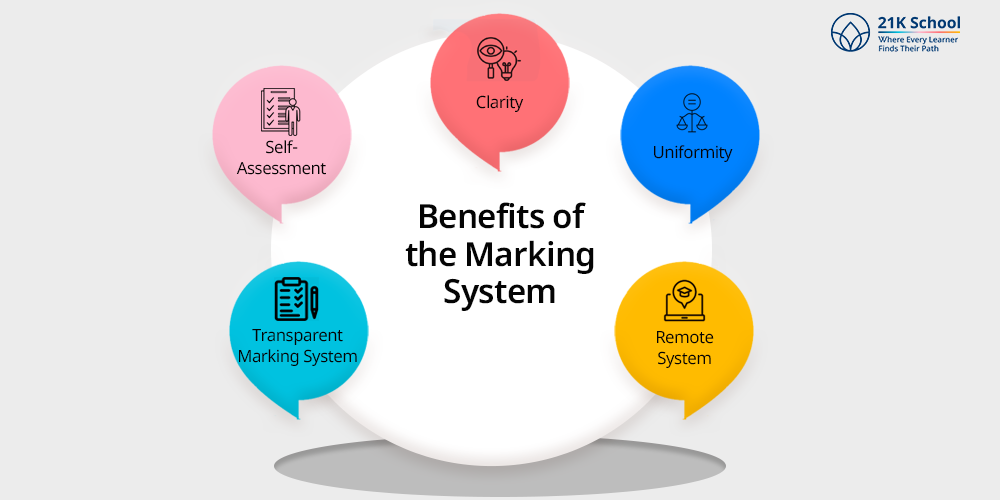
The marking system helps in maintaining consistency as well as allows for equitable assessment.
The marking system uses predetermined standards which help in enhancing students’ motivation and sense of development.
It offers a methodical framework for giving feedback that helps in understanding useful information that directs students’ development. It reduces the likelihood that the assignment specifications will be misunderstood.
A supportive learning method that promotes advancement is also fostered by the marking system.
1. Transparent Marking System
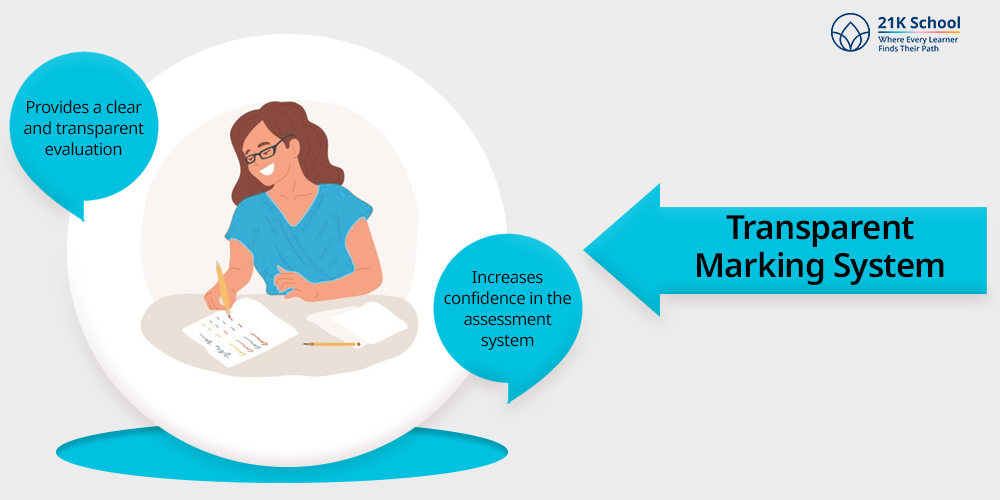
The marking system provides a clear and transparent evaluation, which helps students comprehend how their work is evaluated.
This clarity increases confidence in the assessment system while also simplifying the grading process.
Students are more inclined to interact with the content and work toward improvement. Through this, they are aware of the expectations and the criteria used to evaluate their performance.
2. Self-Assessment
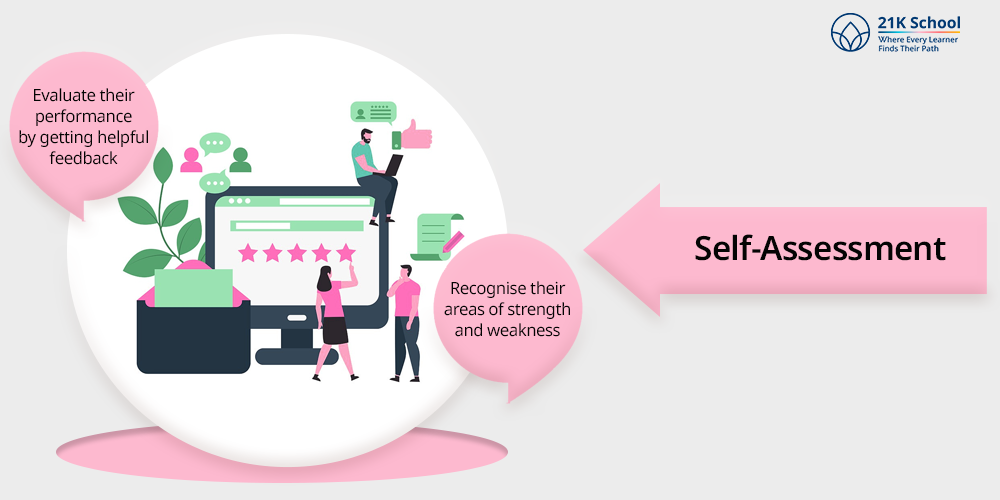
A key component of a successful self-evaluation process is comprehensive feedback. Students are urged to critically evaluate their performance by getting helpful feedback on their work.
Through this reflection, they are able to recognise their areas of strength and weakness, which enhances their confidence.
3. Clarity
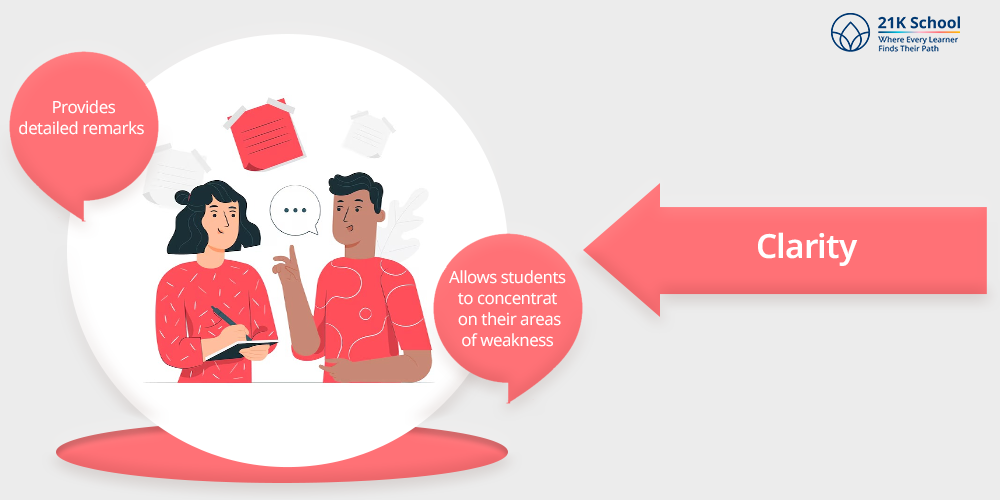
Marking system provides clarity which provides detailed remarks and recommendations in the marking system.
It deepens their comprehension of the subject matter by improving their abilities and assisting them in grasping difficult ideas.
Clear and useful feedback allows students to concentrate on their areas of weakness and expand on what they already know, which eventually leads to a deeper understanding of the subject matter.
4. Uniformity
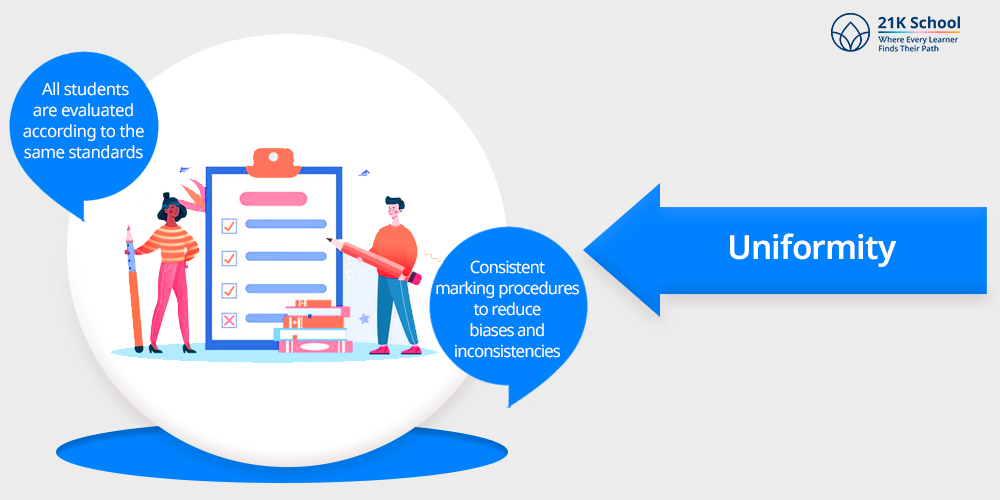
The marking system provides consistency in evaluation across various assignments and subjects.
All students are evaluated according to the same standards and criteria, which encourages fairness in the evaluation process.
All students can benefit from a positive learning environment. Through this, teachers use consistent marking procedures to reduce biases and inconsistencies.
5. Remote System

This adaptability makes it possible to use a variety of assessment techniques to meet different learning needs.
Technology can be incorporated into remote marking systems to support personalised learning paths, enable peer-to-peer learning assessments and give prompt feedback.
This method helps in easy assessment and beneficial components of the learning process in any context by adjusting to the online format.
Drawbacks of the Marking System

There are various advantages of a marking system that helps in assessing students’ performance.
However, along with the students’ performance, there are also a number of disadvantages that may affect the learning process.
Subjectivity in grading is a major challenge that results in unfair evaluations due to which it causes individual prejudices.
Students may become frustrated because they believe their grades are unfair, and the marking system’s credibility may be damaged by this subjectivity.
1. Subjectivity
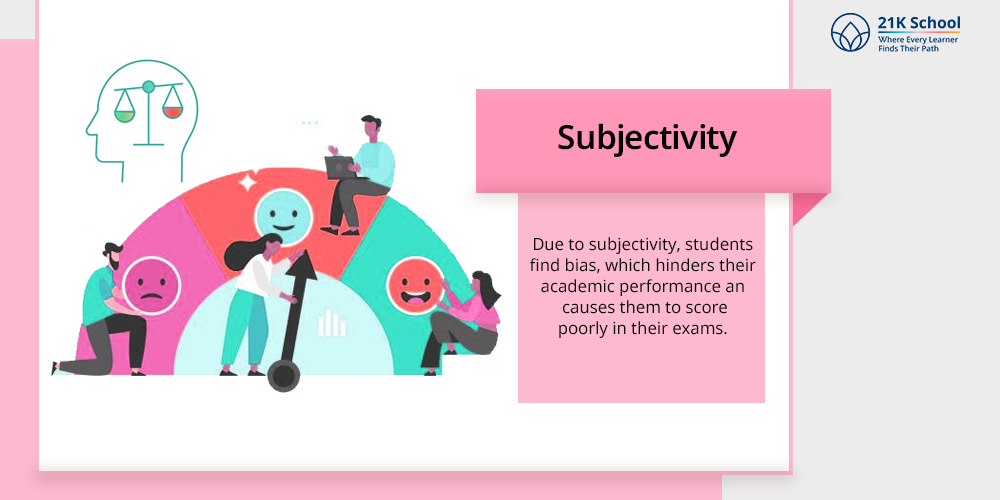
Subjectivity is a major cause in the marking process, which leads to inconsistent evaluations.
Due to subjectivity, students find bias, which hinders their academic performance and causes them to score poorly in their exams.
Explore how to improve child academic performance.
Even due to subjectivity, it also interests students and teachers’ assessment of education.
2. Measurement Errors
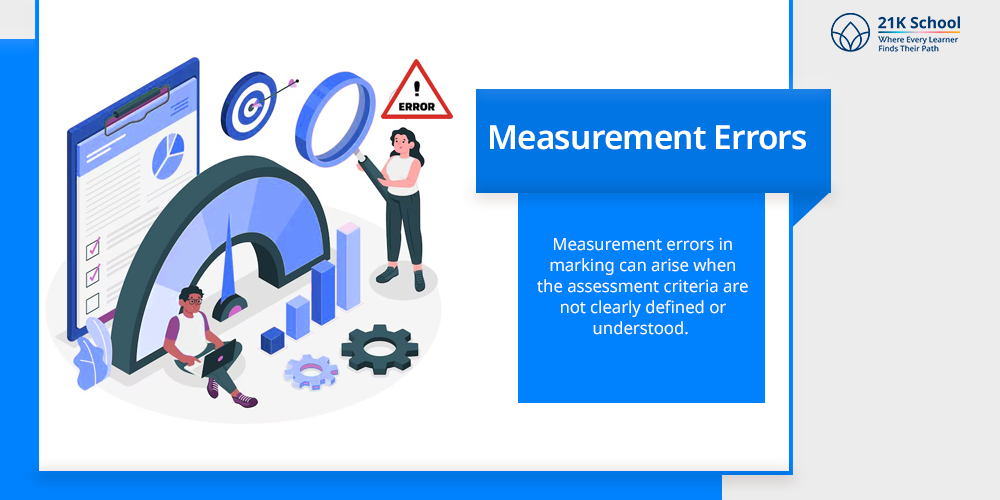
Measurement errors in marking can arise when the assessment criteria are not clearly defined or understood.
These inaccuracies can significantly affect the reliability of the evaluation process. Without well-established benchmarks, the likelihood of misinterpretation increases, leading to discrepancies in grading.
3. Lack of Context

Marking may sometimes fail to consider the broader context of a student’s performance or personal circumstances.
Factors such as individual challenges, learning styles, and external pressures can significantly influence a student’s ability to perform well.
When these contextual elements are overlooked, it can lead to unfair evaluations that do not accurately represent a student’s capabilities or efforts.
4. Unfair Assessments
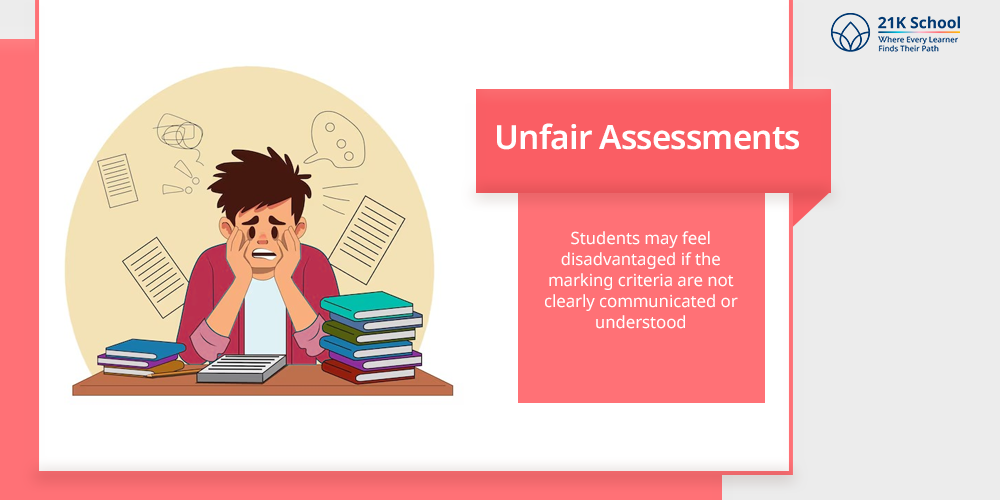
Students may feel disadvantaged if the marking criteria are not clearly communicated or understood. When assessment expectations are ambiguous, it can result in confusion and frustration among students.
This lack of clarity can lead to feelings of inadequacy, as students may struggle to meet undefined standards.
5. Focus on External

An overemphasis on external factors in the marking process can detract from students’ intrinsic motivation to learn.
When assessments prioritise grades, rankings, or other external rewards, students may become more focused on achieving high scores in exams rather than cultivating a genuine desire for knowledge and understanding.
Benefits of the Grading System
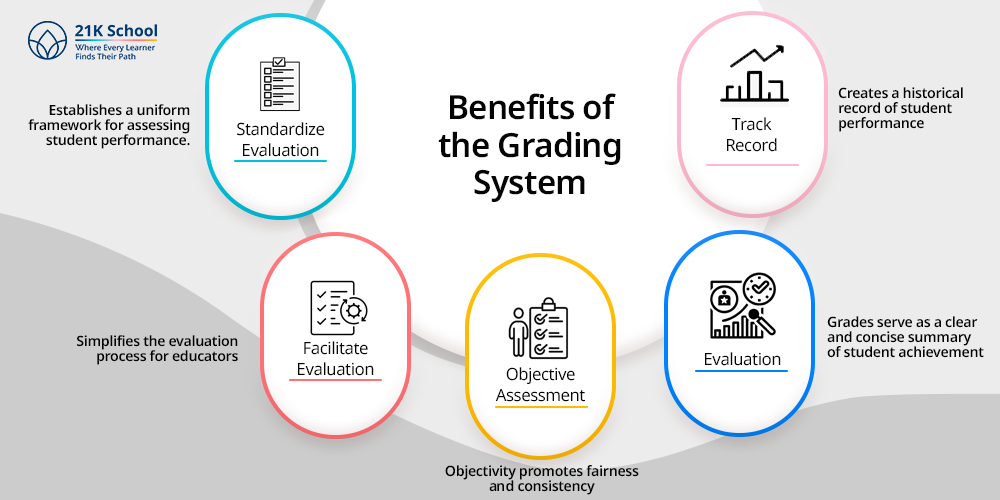
The grading system has lots of benefits that provide a smooth assessment process.
It provides teachers a standardised and transparent way to evaluate student performance, enabling them to accurately assess and convey academic achievements.
Students are able to identify areas for improvement and set specific learning goals, which also helps them understand their strengths and weaknesses.
1. Standardize Evaluation

Standardized evaluation through grading establishes a uniform framework for assessing student performance across various subjects and educational institutions.
This consistency is crucial as it allows for meaningful comparisons between students, classes, and schools.
2. Facilitate Evaluation

The grading system significantly simplifies the evaluation process for educators, making it more efficient and manageable.
By providing a structured approach to assessing student performance, grading allows teachers to focus on delivering quality instruction while effectively managing their assessment responsibilities.
3. Objective Assessment

A key advantage of the grading system is its reliance on established criteria for assigning grades, which helps to reduce subjectivity in evaluations.
This objectivity promotes fairness and consistency in the assessment process, as educators adhere to clear standards when evaluating student work.
4. Evaluation

Grades serve as a clear and concise summary of student achievement, making it easy to communicate performance levels to various stakeholders, including parents, administrators, and future educational institutions.
This clarity is essential for fostering open communication about student progress and areas needing improvement.
5. Track Record

The grading system creates a historical record of student performance that can be invaluable for future academic and career opportunities.
This record not only reflects a student’s achievements but also serves as a tool for planning their educational paths.
Drawbacks of the Grading System
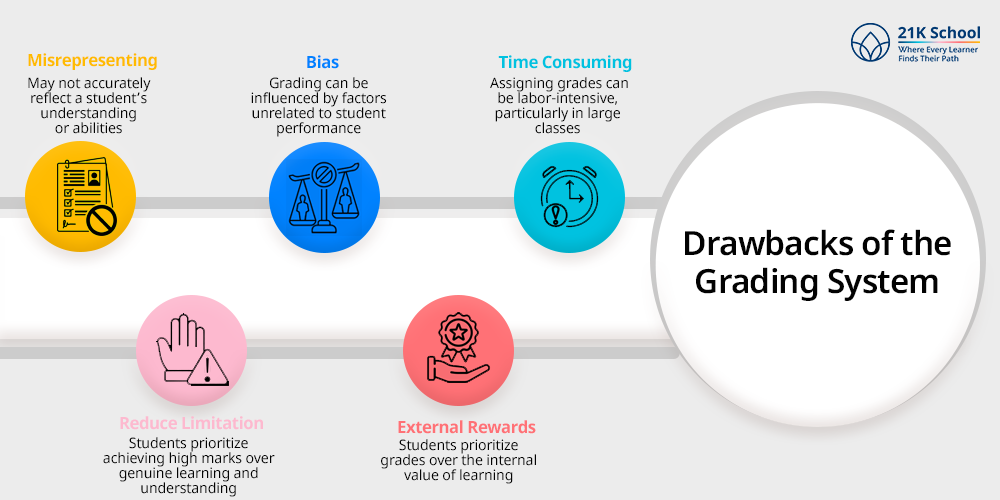
The grading system has several benefits that enhance the learning capacity of students and provide easy access to education.
However, along with so many benefits, it has so many disadvantages that hinder students’ performance and sometimes causes biased results.
Grades can also cause students to feel excessive pressure and anxiety which reduces students’ performance and hinders their potential to achieve future goals.
1. Misrepresenting
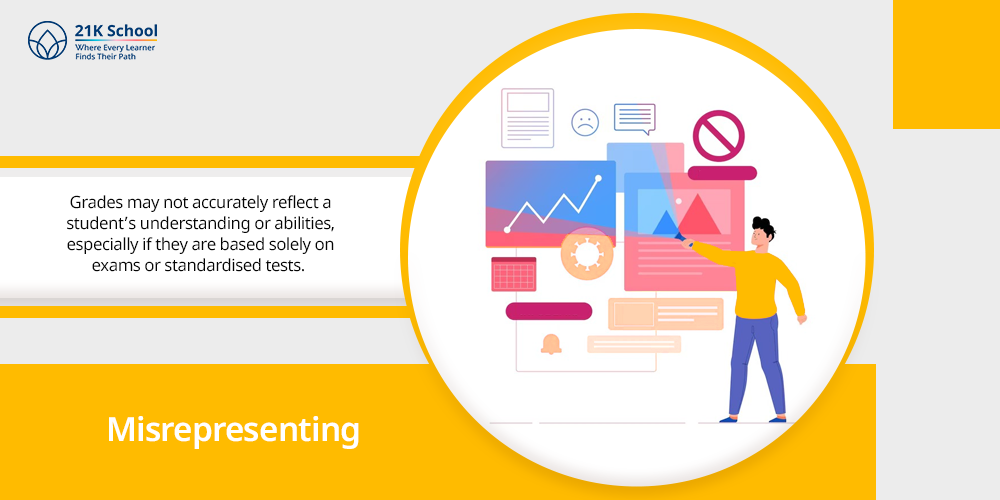
Grades may not accurately reflect a student’s understanding or abilities, especially if they are based solely on exams or standardised tests.
This kind of misrepresentation can happen, especially when exams or standardised tests are the only basis for assessments, which might not fully represent a student’s knowledge or abilities.
2. Bias:
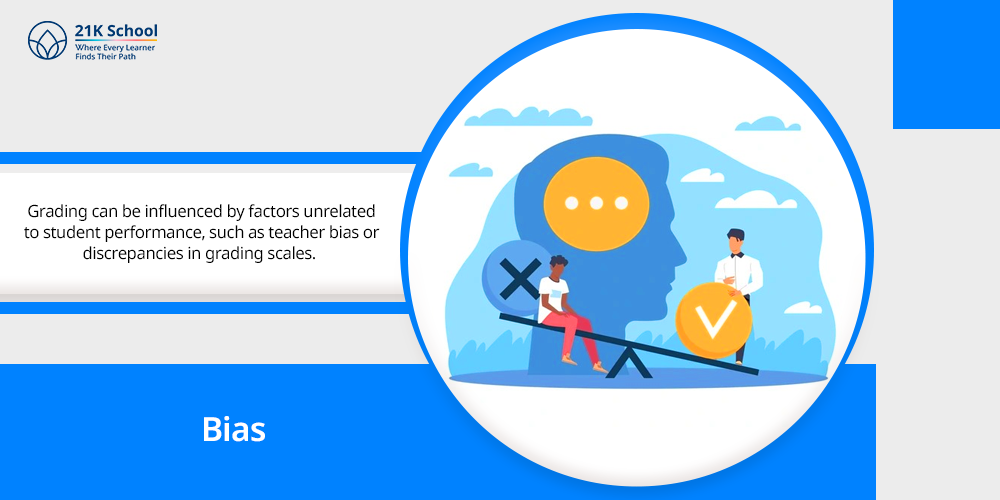
Grading can be influenced by factors unrelated to student performance, such as teacher bias or discrepancies in grading scales.
Inconsistencies in the grades can result from a variety of factors including differences in grading scales, personal relationships and teacher bias.
This hampers students’ performance and hinders their true potential.
3. Time Consuming:

The process of assigning grades can be labor-intensive, particularly in large classes, leading to potential delays in feedback.
Grading takes a lot of time which may cause delays in giving students the feedback they need to learn and develop.
Students may lose out on important chances to recognize their errors and enhance their performance if feedback is not given promptly.
4. Reduce Limitation

The focus on grades may encourage a narrow view of success, where students prioritize achieving high marks over genuine learning and understanding.
This emphasis on grades could cause students to take a cursory approach to their studies where they are more focused on fulfilling predetermined grading requirements than they are on really understanding the subject matter.
5. External Rewards

The grading system can lead to a focus on external motivation, where students prioritize grades over the internal value of learning.
The grading system often sees extracurricular activities and assessments, where students prioritize grades as a primary measure of success rather than valuing the intrinsic benefits of learning.
Conclusion
With their own advantages and disadvantages, marking and grading are both crucial elements of the educational assessment environment.
While grading offers a consistent way to assess overall performance, marking offers specific feedback that can improve learning and encourage student development.
Educators can select the best assessment techniques for their students by being aware of the advantages and disadvantages of each system, which will ultimately create a more encouraging and productive learning environment.
Teachers can develop a thorough assessment strategy that supports both academic success and personal growth by striking a balance between the two methods.

